Interesting Anecdotes from an Uninteresting Road
From Beyneu to Nukus is a straight, long road that splits steppes and deserts in two symmetrically boring halves. Still, it was a fun drive.
The stretch of road that links the last Kazakh town to the first Uzbek one crosses the most monotonous landscape that we have seen so far. We were expecting to be bored out of our minds, and I told myself that on a roadtrip these long and flavorless commutes are just a price to pay to reach the next exciting desitination. Instead, provided that one approaches every day with enough curiosity, even the most unsuspecting events and places become a source of wild entertainment. When there’s nothing to see, there’s everything to see.
Beyneu
Driving South-East, Beyneu is the last Kazakh outpost before an unbroken long stretch of steppe and desert begins. Much has been said and written about Beyneu. Should you be one of those few people that never heard of it, I highly recommend this article written by a bike traveler that got stuck relaxed in town for five days. Past Beyneu, one has to drive at least 400km before finding very bad diesel, or 700km before finding a better-but-still-questionable diesel, or 1700km for good diesel. There is also no drinkable water that we knew of for 700km. This makes Beyneu a crucial logistical hub for overlanders.
We did the following things:
Shopped for food at the local bazar.
Bought as much diesel as we can fit in the van, giving us a range of 1600km.
Filled the water tank. We first went to a big water tower, and we were told to just take as much as we wanted. In the middle of the desert, this was suspicious. We saw workers using this water to fill construction site trucks to make concrete: also quite suspicious. We then took a long, hard look at the water itself, which was a deep amber color. We left and bought bottled water at a supermarket.
Tried to take a shower. We drove to the town’s swimming pool and were told they have no showers, only the pool. We drove to a truck stop where they informed us that we could shower for 800 Tenge. We told them we had always showered on the road for 500 Tenge. The lady said something in Kazakh which I believe means “Good for you”. We showered for 800 Tenge.
Walked around the town and enjoyed its spectacular central square.
Pushed a Lada Niva that would not turn on.
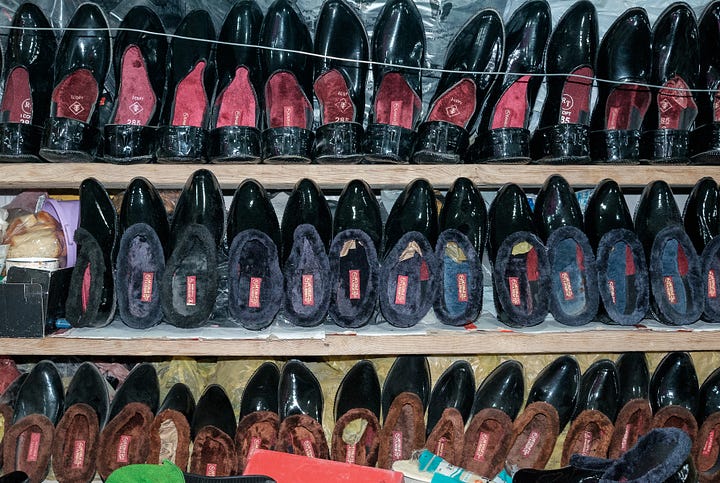
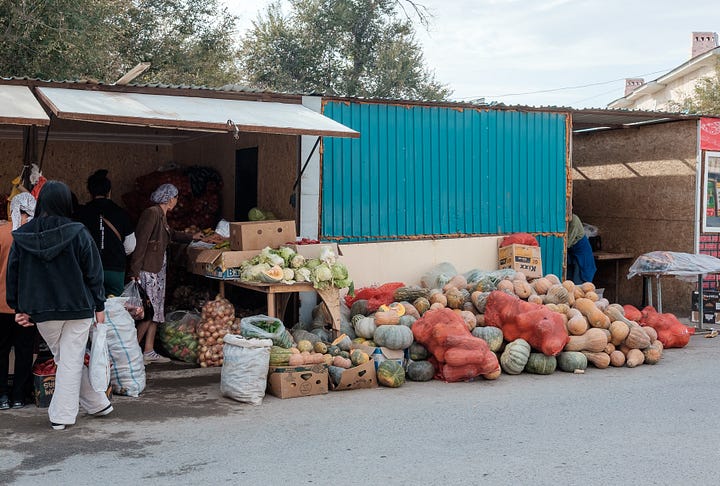
The Italian Panda
On the way to the border, we overtook a Fiat Panda with Italian license plates, transporting three adult men and a portable fridge. If you know the size of an old Panda, you know that this number of passengers can only mean severe discomfort. We stopped and waved them to a halt. We had a fun chat with these three guys who had flown to Samarkand to retrieve a Panda that two friends had left parked there. They had driven it from Samarkand to the Kazakhstan/Russia border only to realize they had the wrong Russian visa. They were now driving the Panda back to Samarkand to park it once again where they had taken it. Will the poor Panda ever make it back to Italy? The question keeps me awake at night.
The Kazakhstan/Uzbekistan Border
It took us eight hours to cross this border. It is so much time that I am not sure I can trust my recollection of the day. Real events blend with imagined ones, in a dreamy haze of Soviet bureaucracy, bribes, scam attempts, and chewing tobacco.
When we arrived at the back of the queue we were immediately recognized as tourists and offered what they call special treatment, which means we were allowed to skip the entire line of waiting cars and begin our wait at the gate of the Kazakh exit checkpoint. The locals, who have to spend multiple days waiting in their cars and are all equipped with pillows and blankets, were surprisingly fine with this. The only request we got in exchange for the special treatment was to follow the 20-year-old border guard on Instagram.
Some time later, we were let into the Kazakh checkpoint, where all cars get inspected. For locals, this means emptying completely the car, unloading the roof rack, and opening every piece of luggage. There is a lot to be inspected. Most cars crossing this borders are loaded beyond imagination with all sorts of goods bought in Russia. The average family car has at least six tires, two bicycles, and eight large bags on the roof. For us, the inspection meant that a border guard hopped into the van and lazily opened the cabinets while a curious crowd of locals gathered at the door. This inspection process took a few hours, as 20 cars must be checked before being allowed to drive through as a group. An experienced driver managed to be checked first and let go alone by sliding three Twix in the pockets of a border guard. For us, protecting Lisa’s emergency supply of Bounty was more important than saving time, so we patiently waited in the group.
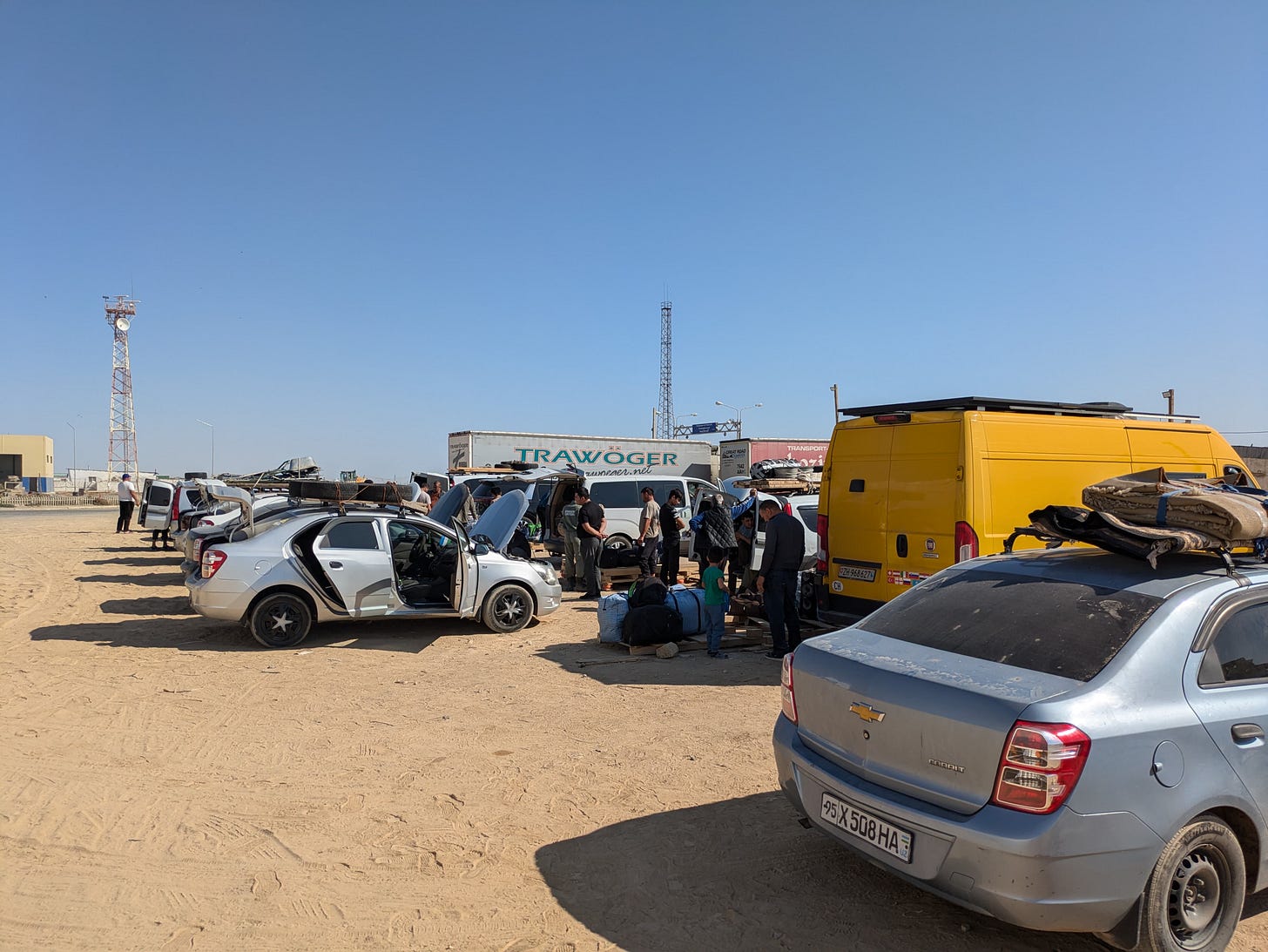
Another eternal wait later, we were in the process of clearing Uzbek immigration. I was sent to a booth where my passport got checked with a microscope under UV light. Near the little slot through which I had given the passport, sat a keyboard with printed on it the question “Quality of the service?” and three buttons: “good”, “medium”, and “low”. The device was in plain sight of the officer manning the booth. I noticed that travelers at the other booth would press on “good” before even taking their passports out of their pockets.
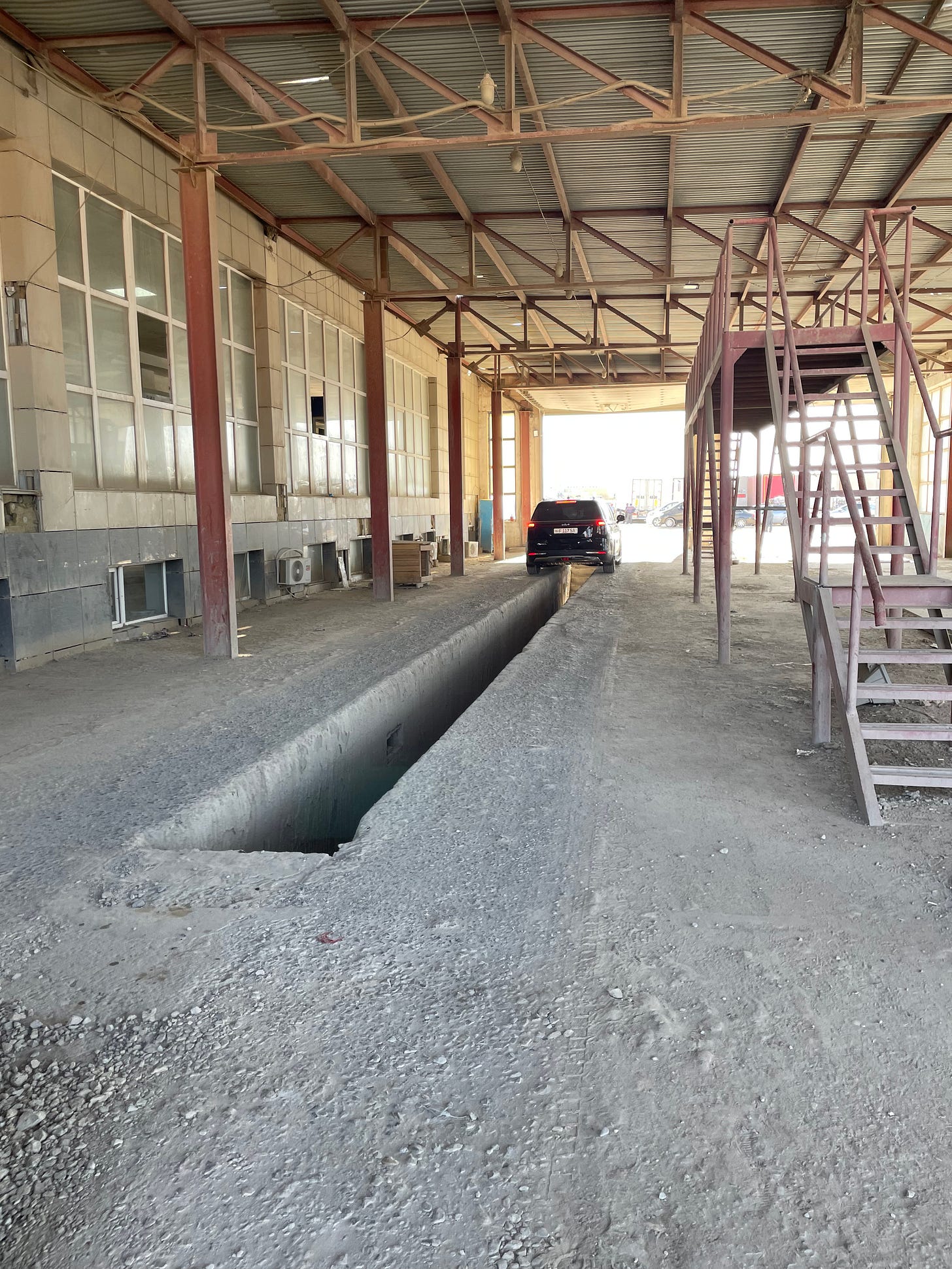
An officer sitting inside another booth said to Lisa
“This is customs and insurance office. Now is pay. English language you understand?”
She understood. The officer told her she would have to pay for photocopies, hence she handed him copies that we had made in advance. He then asked her to pay for a car insurance (despite the place being a customs office, certainly not an insurance one) and Lisa countered saying we were already insured (we were not). He finally said she would have to pay for the customs declaration form. Lisa explained that we knew there was nothing to pay for at this border, and that filling the declaration was the officer’s job. He insisted, saying that he’d have to put our information in the system. Lisa refused once again. After a five-minutes silent wait, the officer filled the customs declaration and we were finally let into Uzbekistan. For free.
The Road into Uzbekistan
The first 300km of road from the Kazakh border and into Uzbekistan are an absolute tragedy. Let me clarify something: we certainly did not drive all the way here expecting to find pristine tarmac, as smooth as a Formula 1 circuit, with elegant white-gloved attendants polishing it daily. We knew about the kind of roads we would encounter. We understood that in the middle of a desert it is complicated to maintain a road. But this one was something else. The surface of the road is completely broken into a patchwork of disjoint concrete islands that are separated by 50-centimeter-wide sharp-edged tenches. There are no potholes to speak of, as there isn’t enough proper asphalt left in which a pothole can form. The result is that the traffic is slowed down to an average speed of 10km/h, and that includes large trucks carrying goods from Russia, passenger minivans, cars, bikes. At times it is just better to drive on sand tracks on the side of the road. For this stretch, we would recommend the fastest available vehicle: a camel.
But! We had heard and read about a new road being built. A perfect, smooth, fast-flowing dream running parallel to the nightmare. Overlanders whisper about the new highway with an almost religious respect, and getting information about it feels like asking a sailor drinking in a dim tavern to share an obscure legend about the treasure island past the horizon.
After clearing the border, we drove 30km and stopped for the night right on the side of a construction site, and there it was: the beginning of the most beautiful highway we had ever seen. The situation is the following: the road is closed. Which, for Swiss us, would mean it’s closed. But, for Central Asian us, it means it’s open. It is built on top of a 2-meter-tall embankment that makes driving through the desert and directly onto the road impossible. We spent the evening and the following morning trying to understand if and how we could reach it. After observing for a while, there they were: once in a while a car would appear at the horizon, drive at 100km/h (one hundred!) until the construction site, cunningly slalom through dirt mounds to a hidden sand ramp, and get off the highway right before the final roadblock.
Our mission for the morning was clear. We drove directly to the ramp, and hopped onto the highway. A mere 300m of smooth bliss later, we were stopped by the police. They were blocking all the cars doing exactly what we were attempting. Most of the cars turned back and left from where they came, while some where let through. They informed us the road was closed; they didn’t know they were talking to Central Asian us. We gestured towards the old road and said “BAM BAM BAM” while shaking our hands in the air in despair. We used Google translate to tell the policemen “our car will explode, and it will be the end for us”. This made them laugh, and was convincing enough, because they decided we could go. There was one little technicality left however: they had to write an official report. We later learnt that, since they now wear body cameras, bribing requests cannot be plain, and “writing a report” has become the equivalent of the “here is pay” we had heard at the border. In this situation, only one technique is effective: playing ignorant and outpatience them using our time advantage. I said one of the few Russian sentences I know: “I don’t understand”. The agent repeated something about a report. We stared at the horizon in silence for a while. They finally realized we were too dumb and let us pass. For free.
The legends said only some sections of the new highway were usable. We managed to drive it all, with the exception of a 1km stretch. This is because along the highway, one will find many gates that are supposed to prevent cars from driving. These gates have however become unofficial toll stations where construction workers ask for a little monetary appreciation of their kindness. Lack of a common language (and our dumb expressions) made our drive toll free. After many opened gates, we found one that was locked, and no toll operator was in sight. We had to find a dirt ramp to descend from the highway into the desert, then drove on sandy tracks until a suitable entry point to resume our comfortable journey. Finding the ramps is not always easy: drivers and workers play a cat-and-mouse game in which workers block the functioning ramps with little mounds of dirt, and drivers discover new accesses. On the road, we drove through numerous active construction sites, and all workers were just happily waving at our yellow van. It seems that they are required to create obstacles against cars, but are then enthusiastic to see daring drivers overcome them.
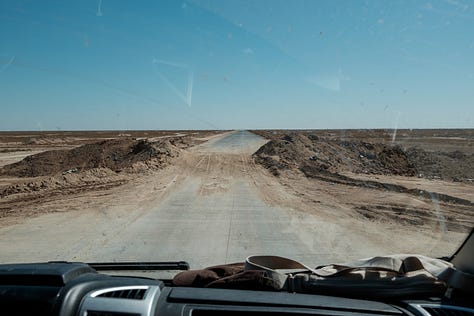
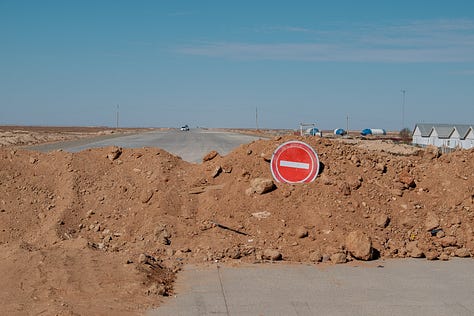
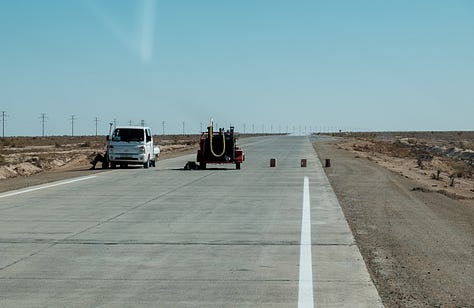
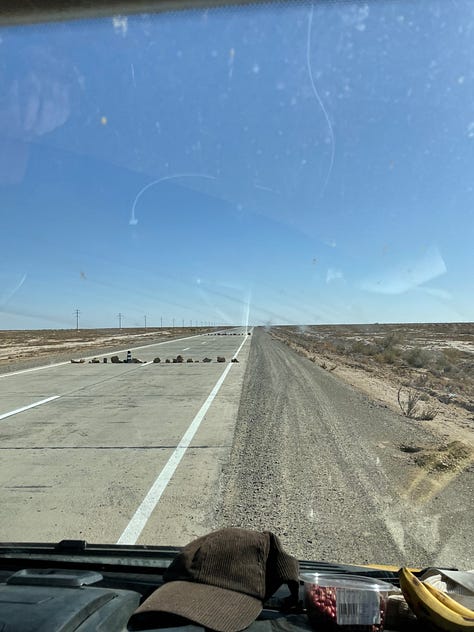
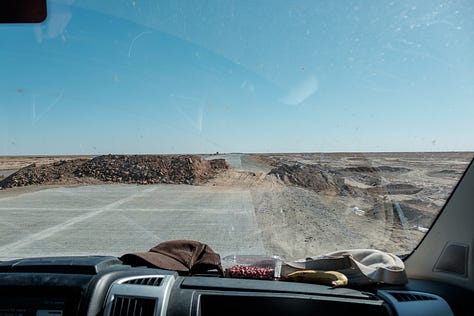
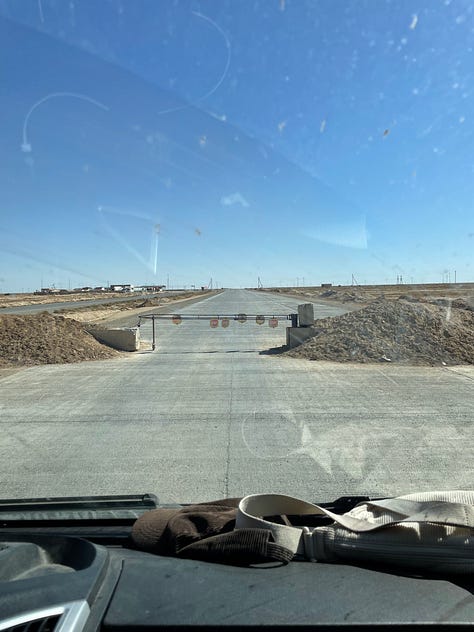
Just like this, we found ourselves at the last dirt ramp off the highway. We had spent four hours comfortably cruising through the desert, while watching with perverse enjoyment the trucks slowly rattling on the old road. The dream highway was reality, and it had saved us one (or more) day of driving and many lose screws.
Nukus
After many days of desert and steppe driving (which began at the Georgia/Russia border) reaching Nukus was puzzling. We went directly to the only attraction that - to the best of our knowledge - the city has to offer: a Soviet avant-garde art museum. The fact that this modern and well-lit museum is here, in the middle of nowhere, feels almost impossible, or unthinkable. It gathers one of the largest collections of an artistic current that the Soviet Union made illegal and - if found - destroyed. The joke goes that Nukus is the best place to keep secrets, as nobody would think of coming here to look for anything. They do have a point - not only things can be well hidden here, one can even exhibit them under museum lights for decades with no risk that they will be found. The Savitsky museum is strongly overlooked by tourists. To us, it was a surprise that we deeply enjoyed.
If you liked reading this, please
And if you haven’t subscribed, do it!




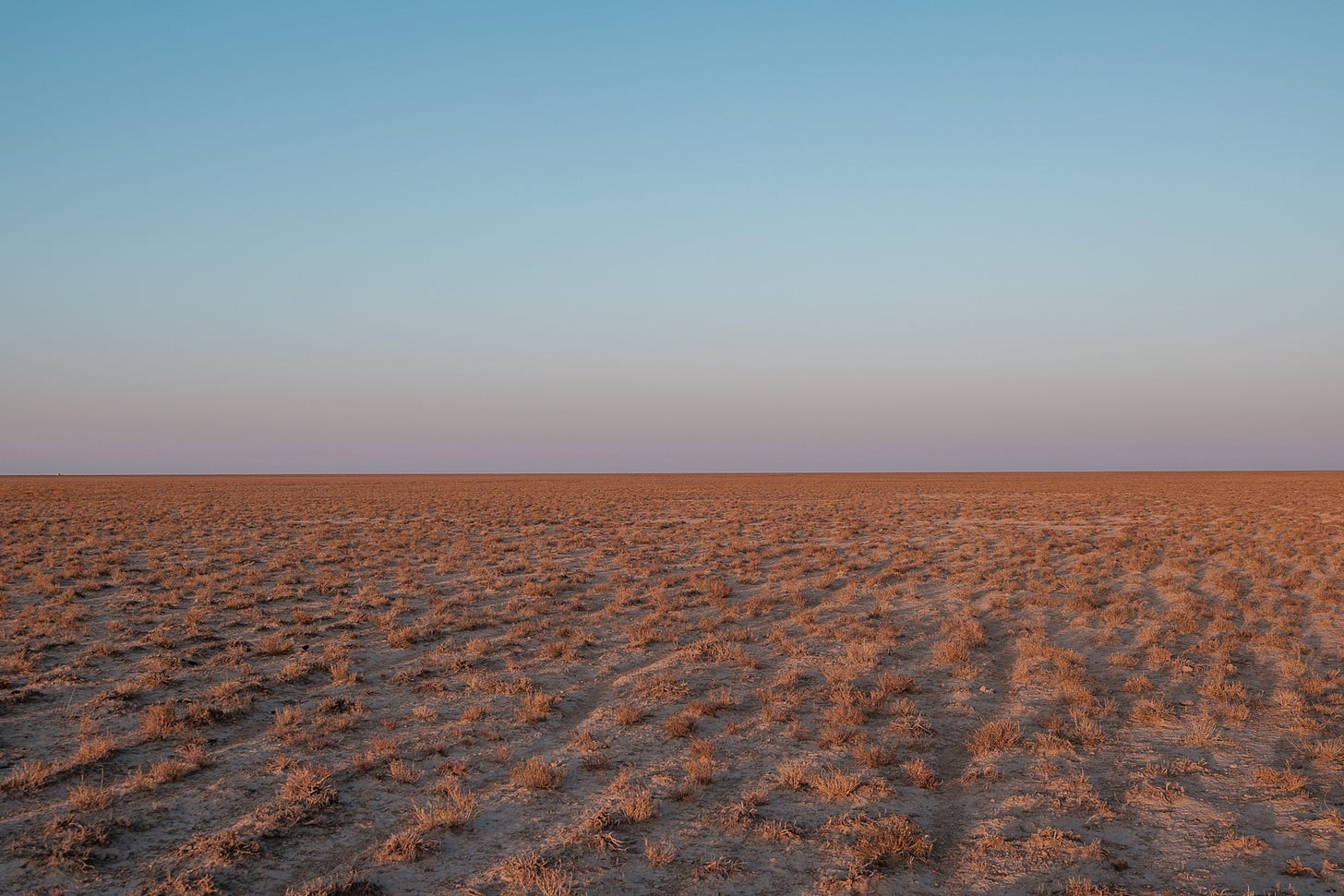
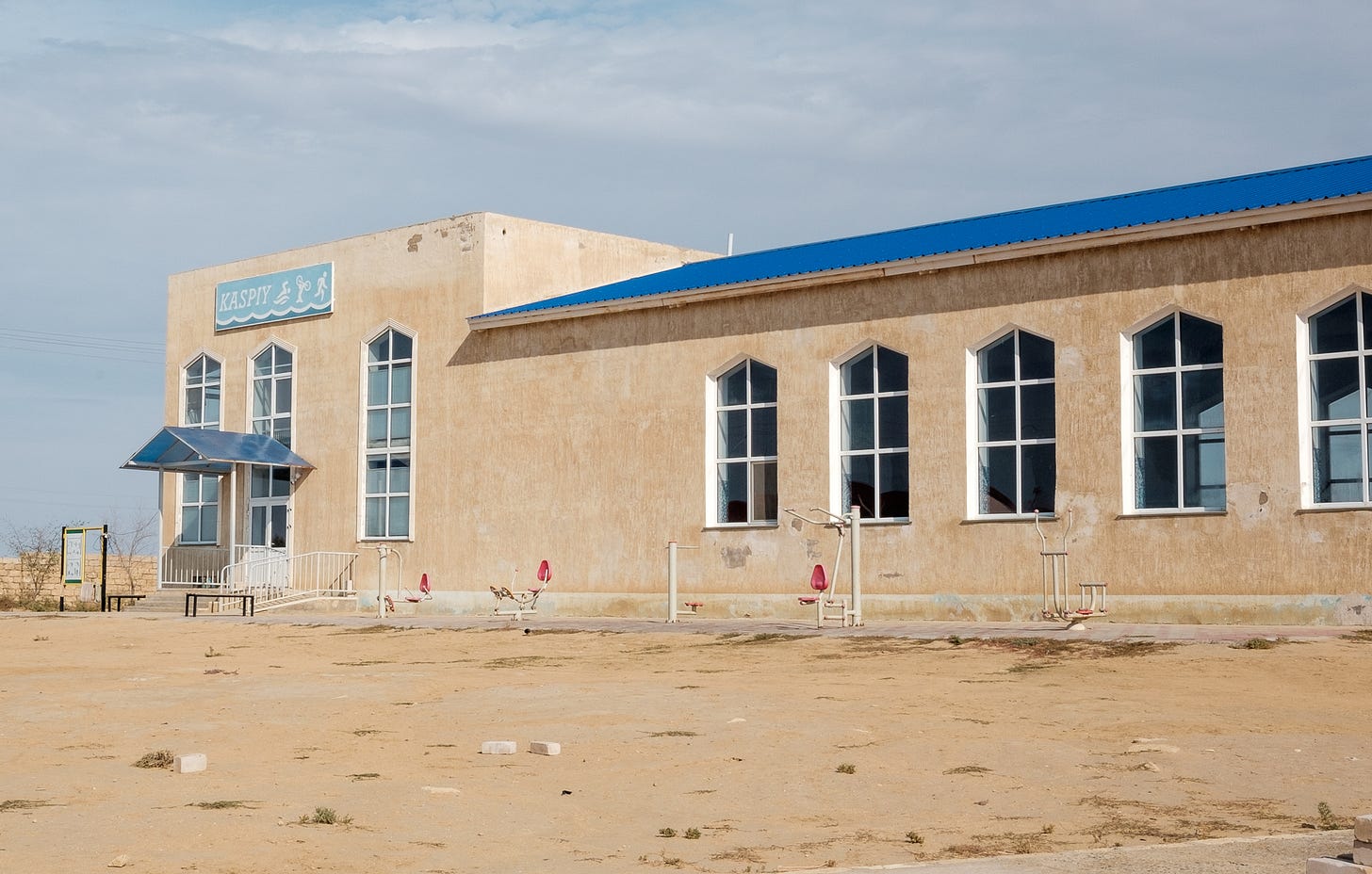
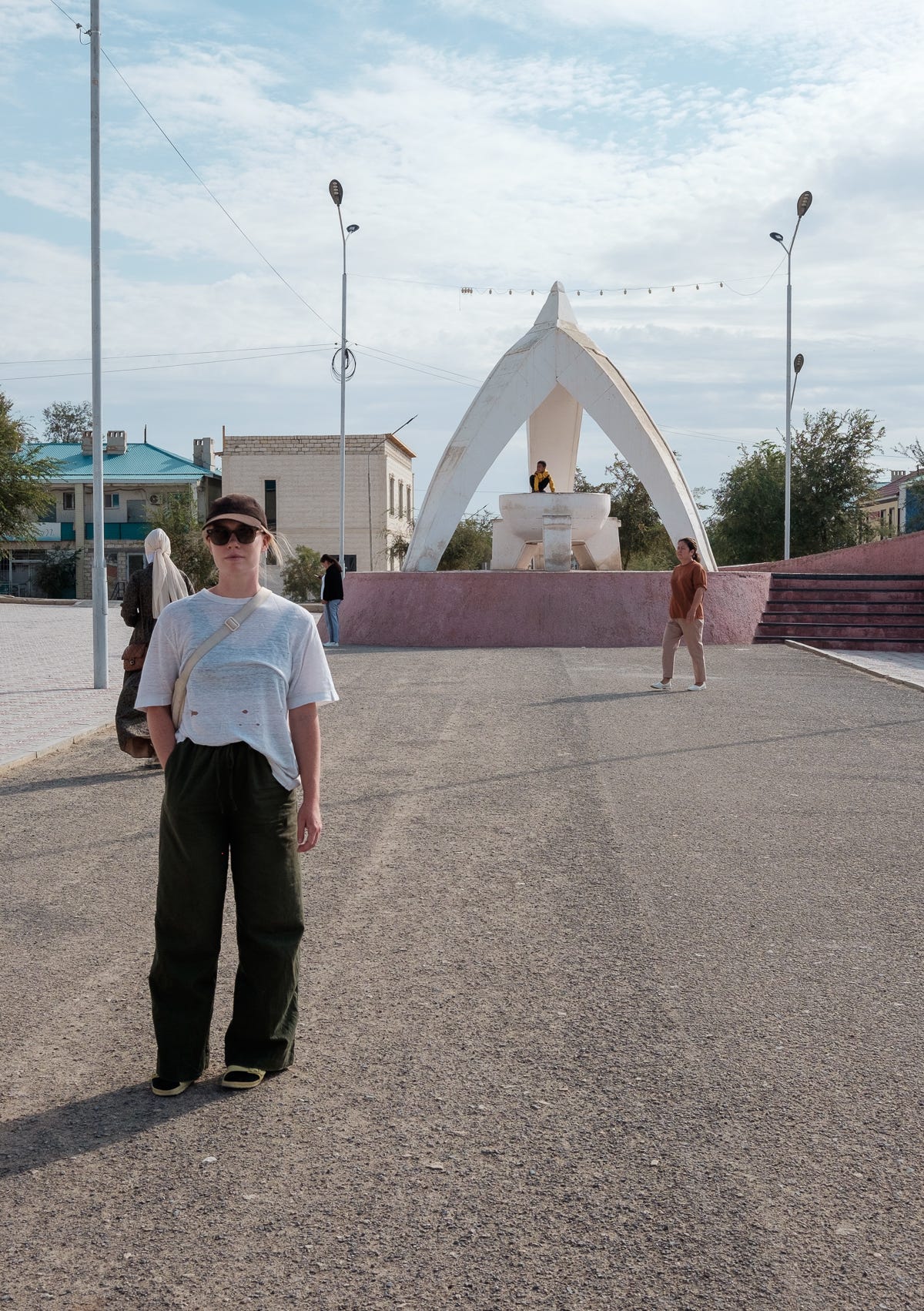
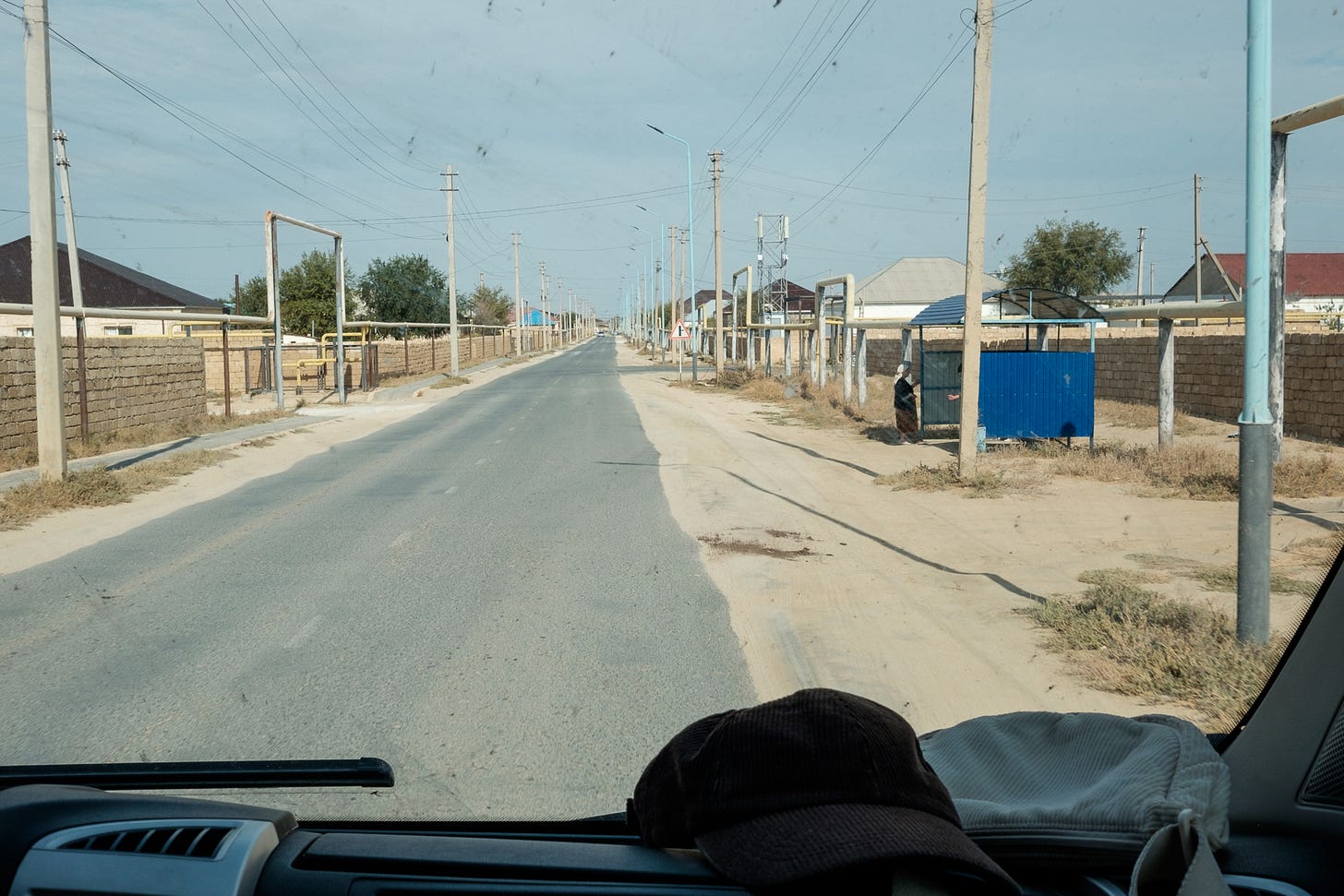
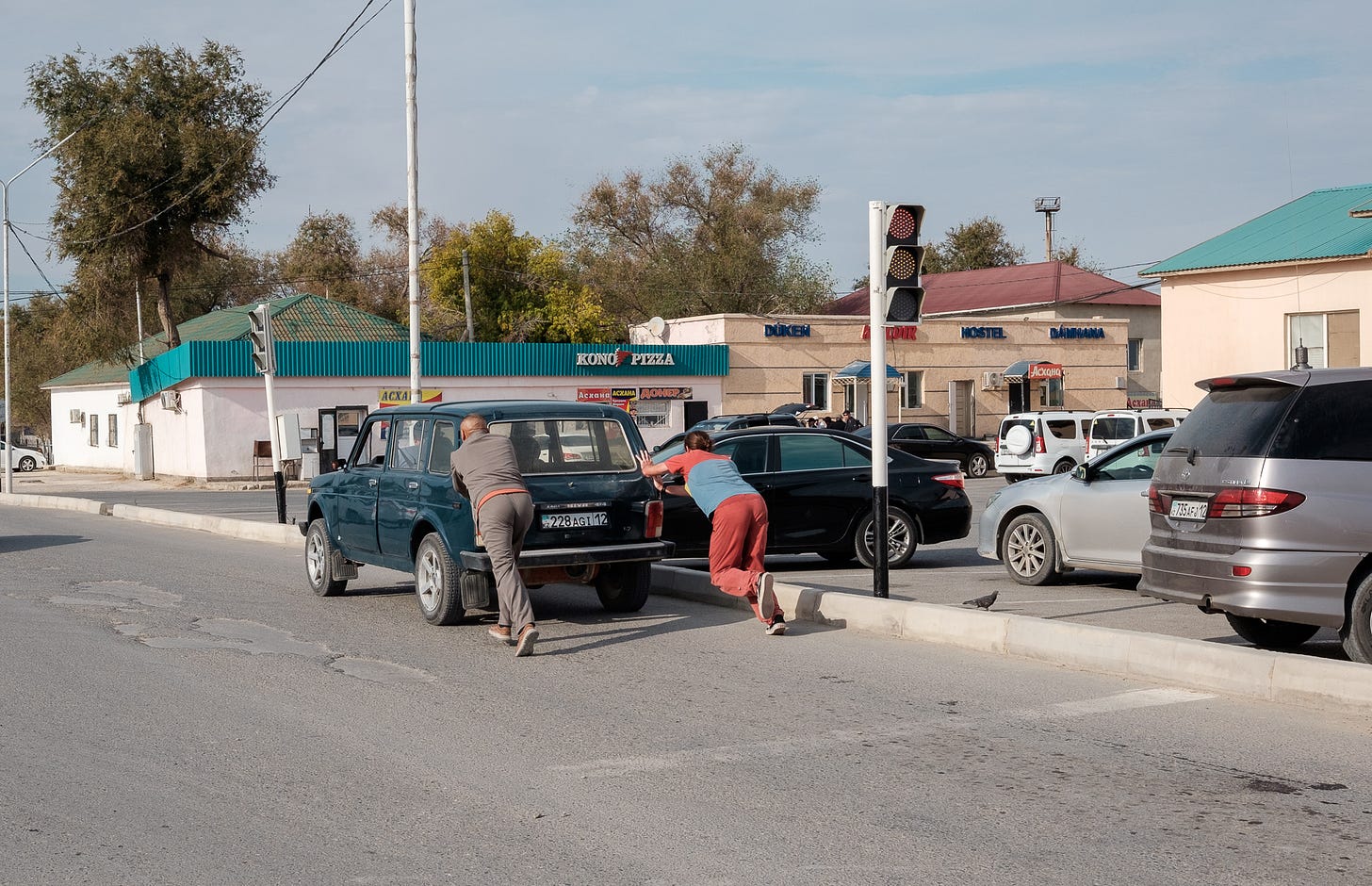
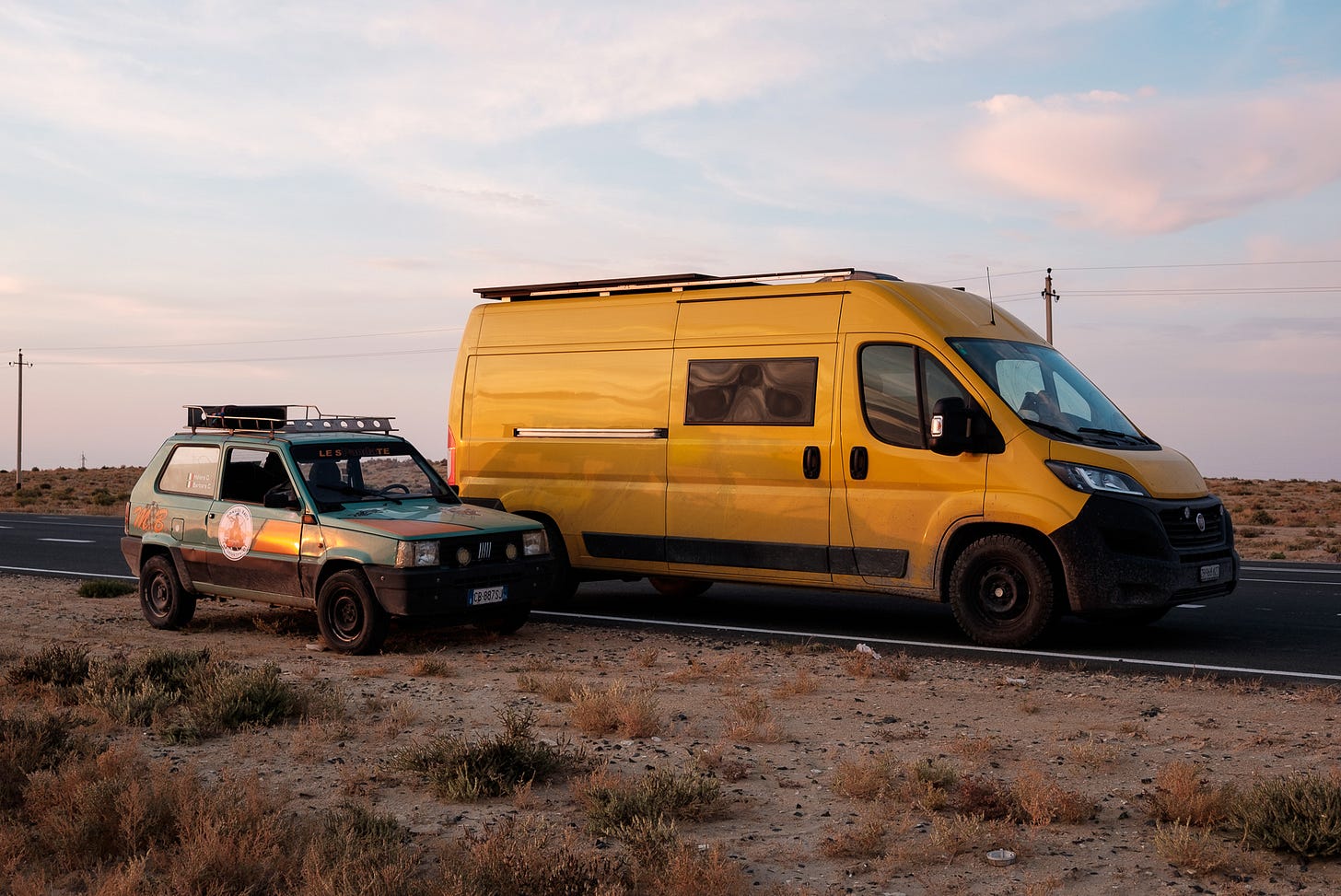
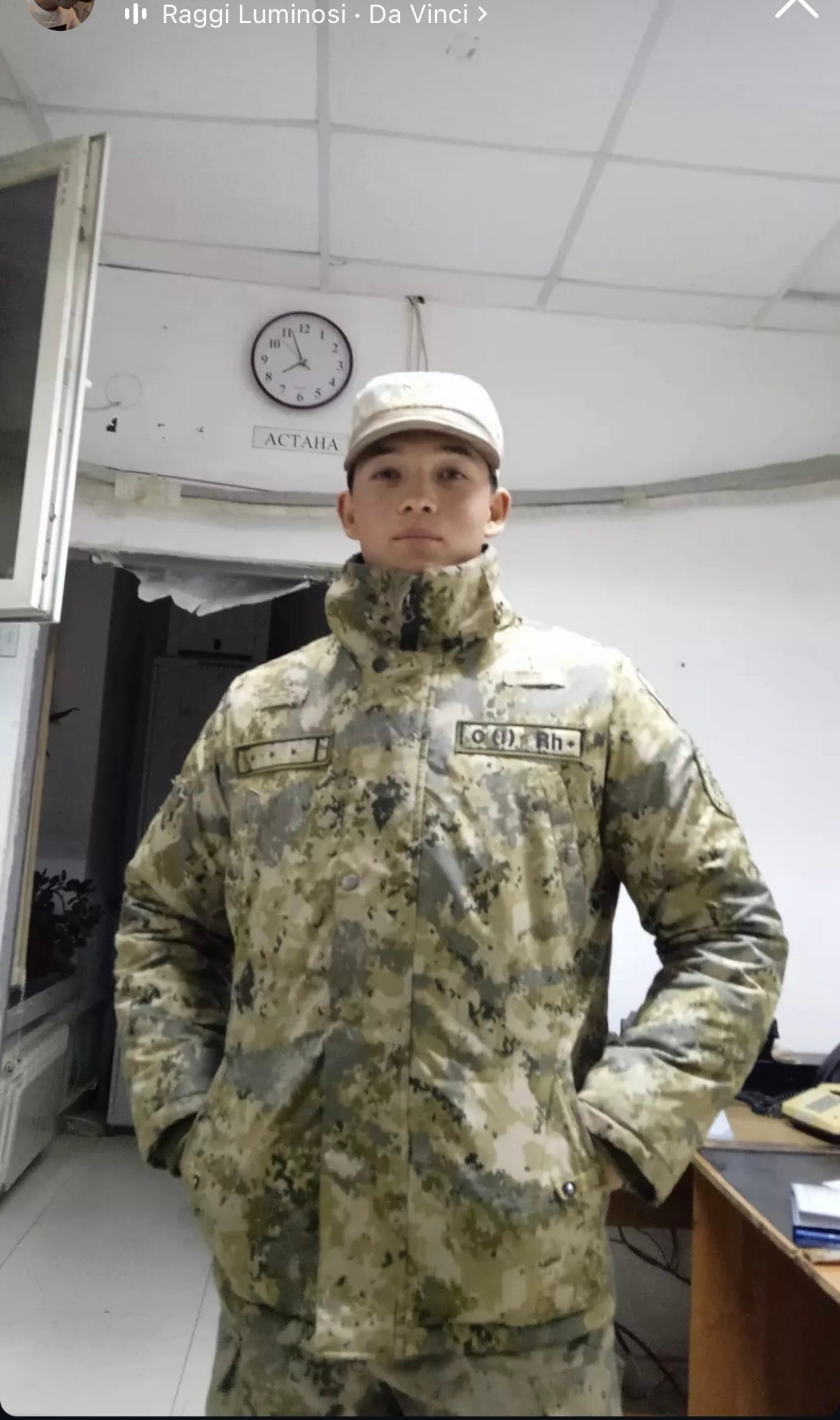
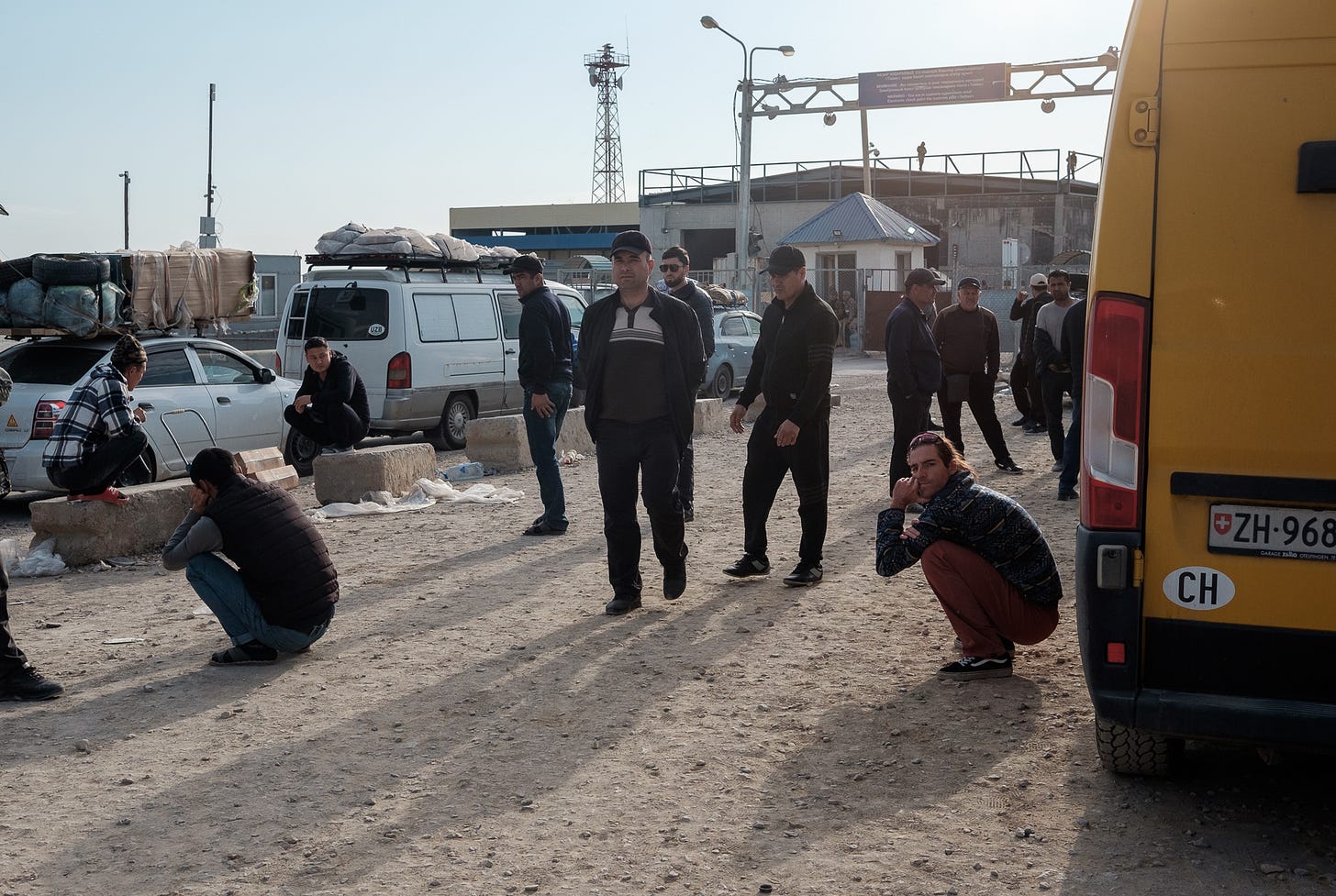
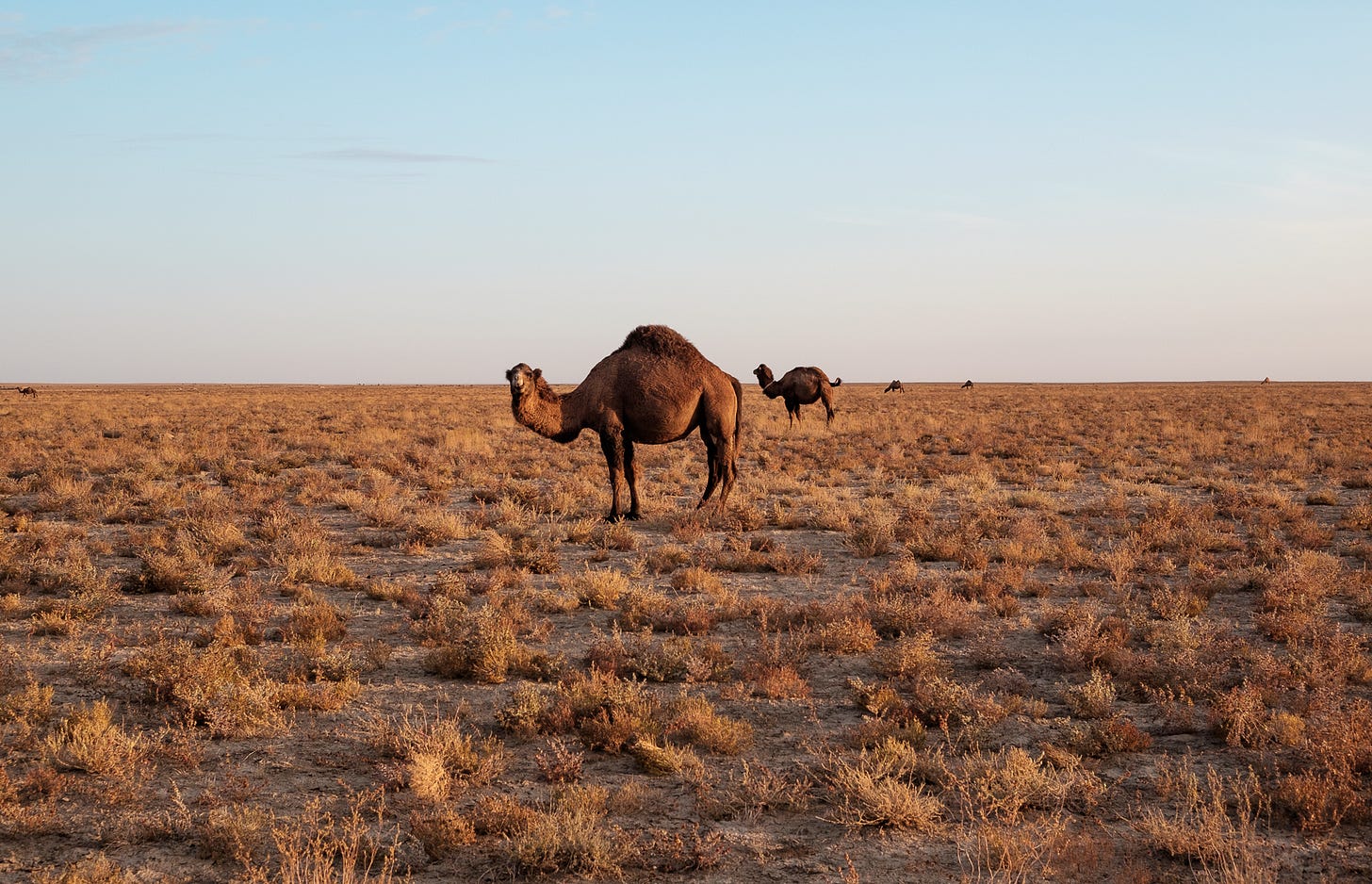
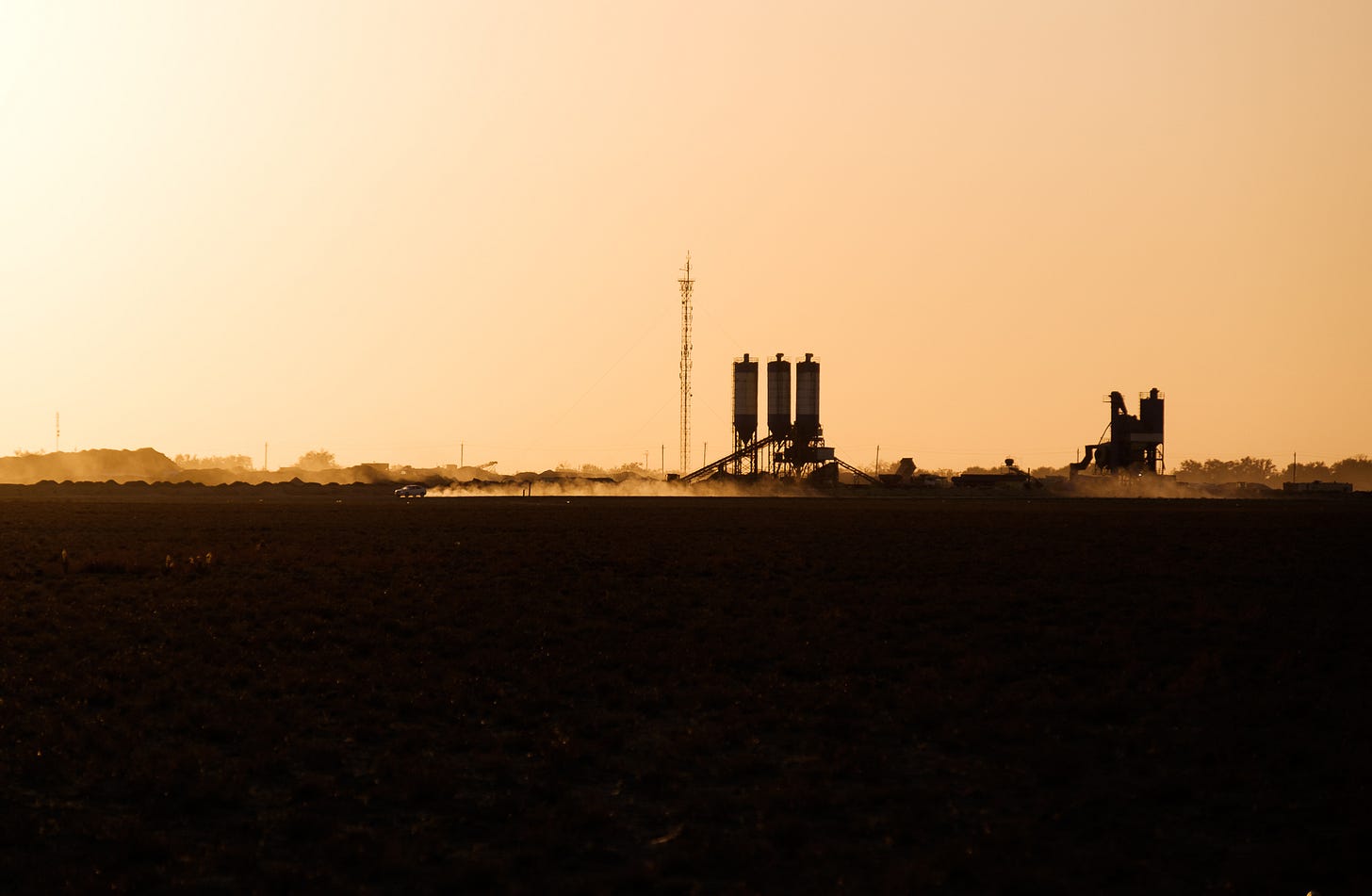
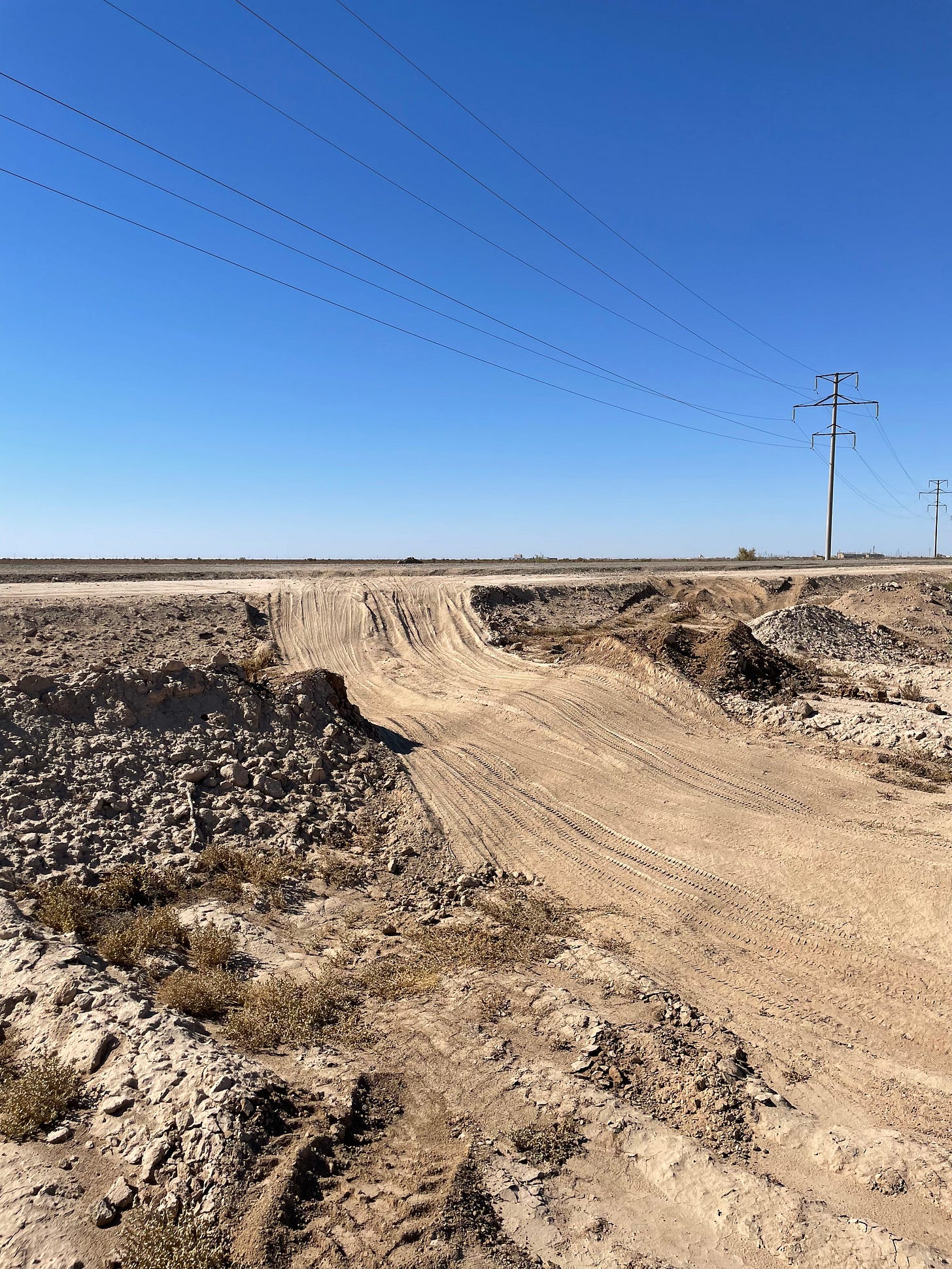
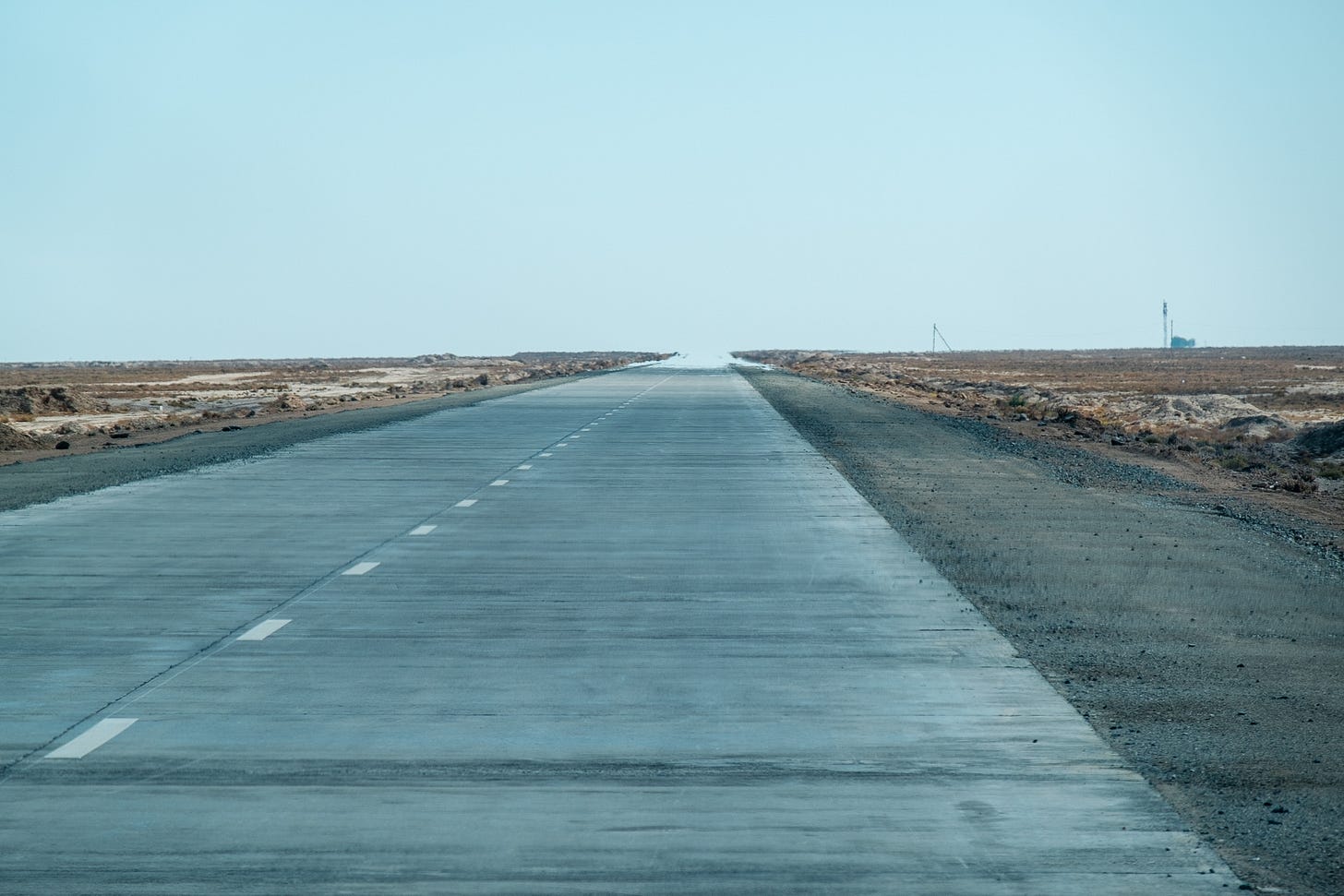


Lisa cannot be intimidated!!